
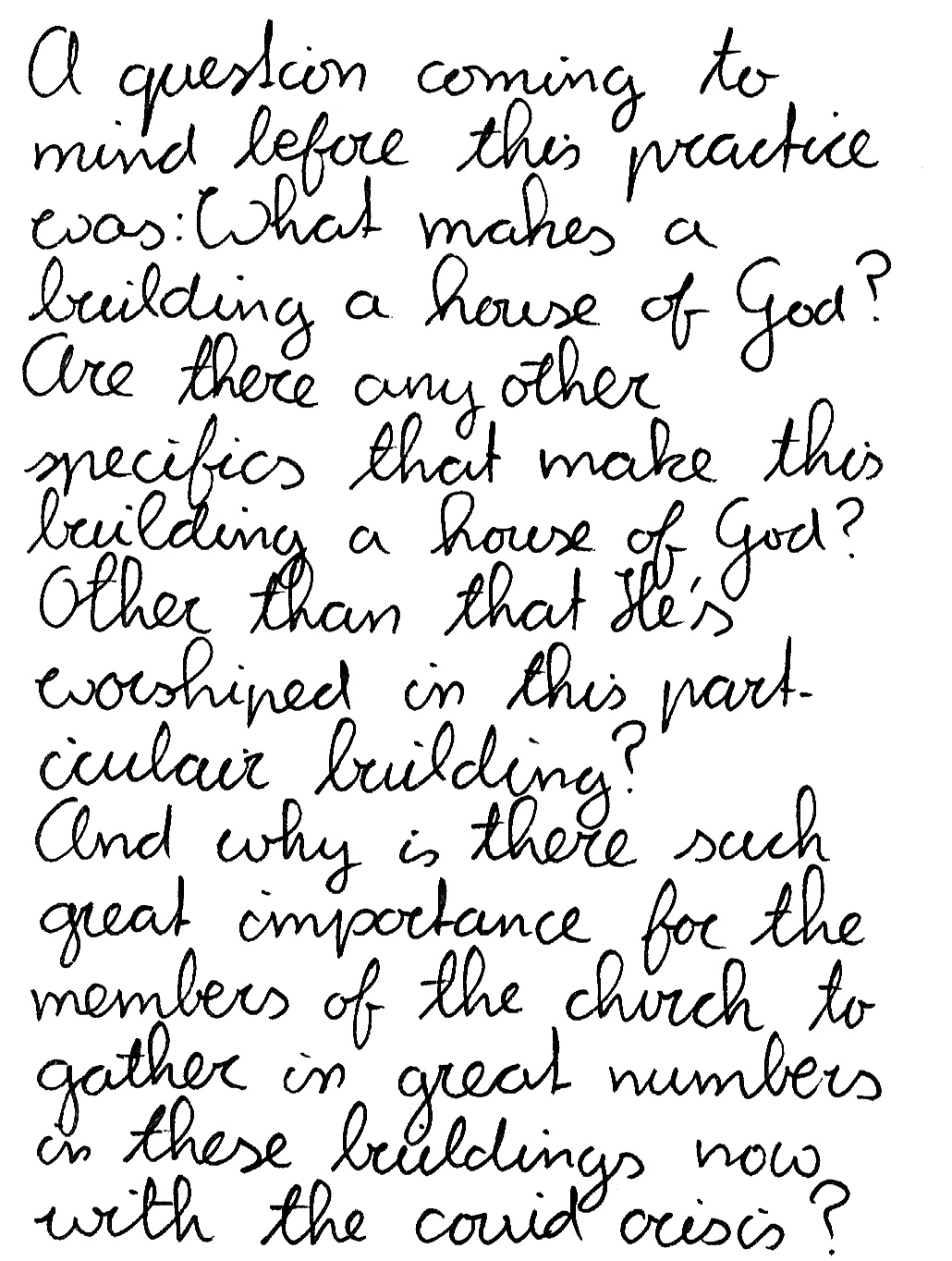
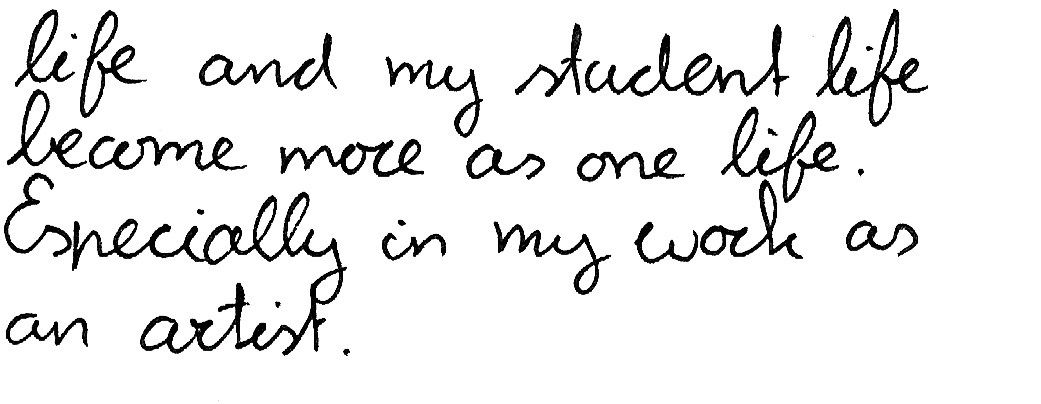
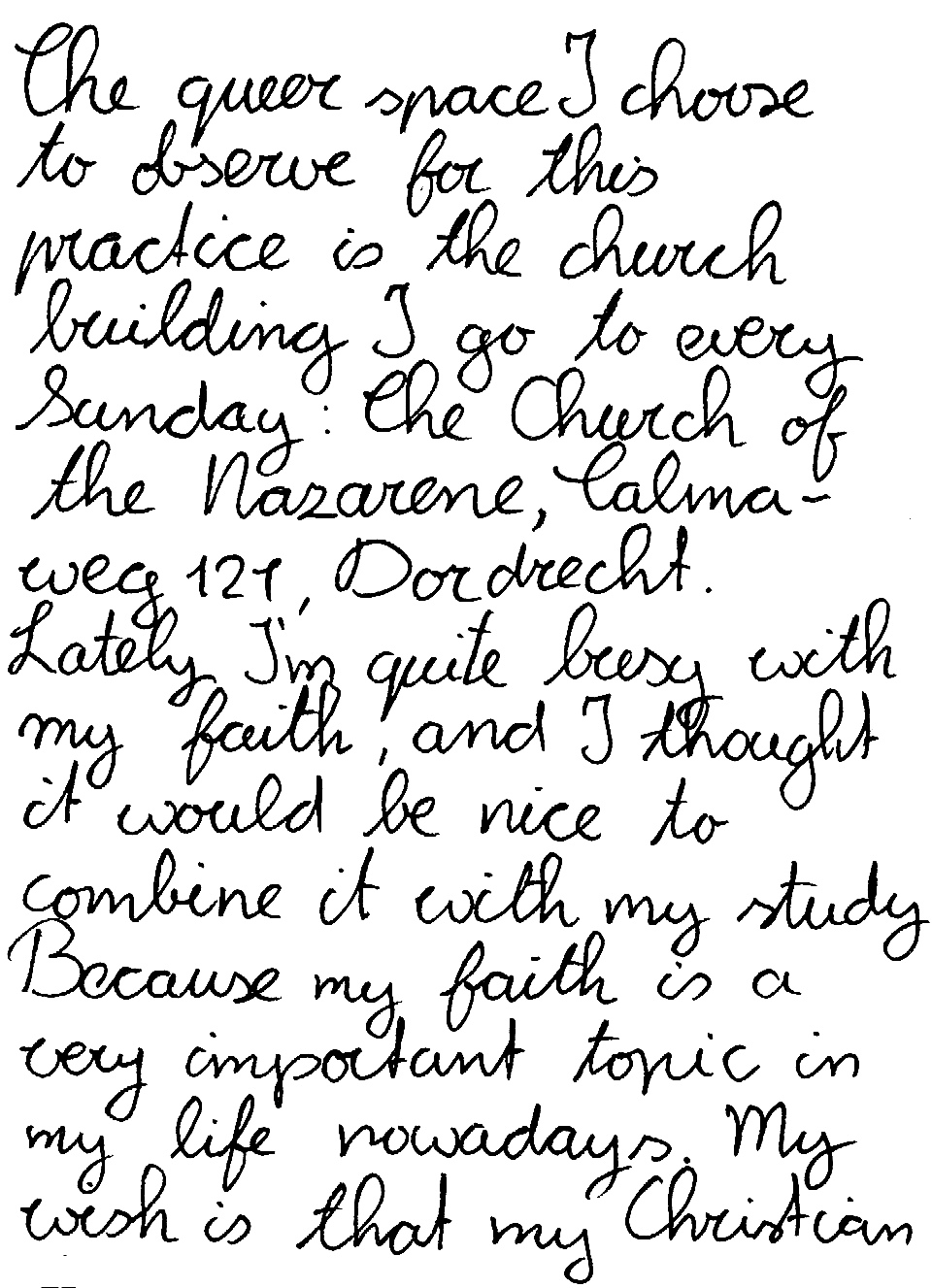

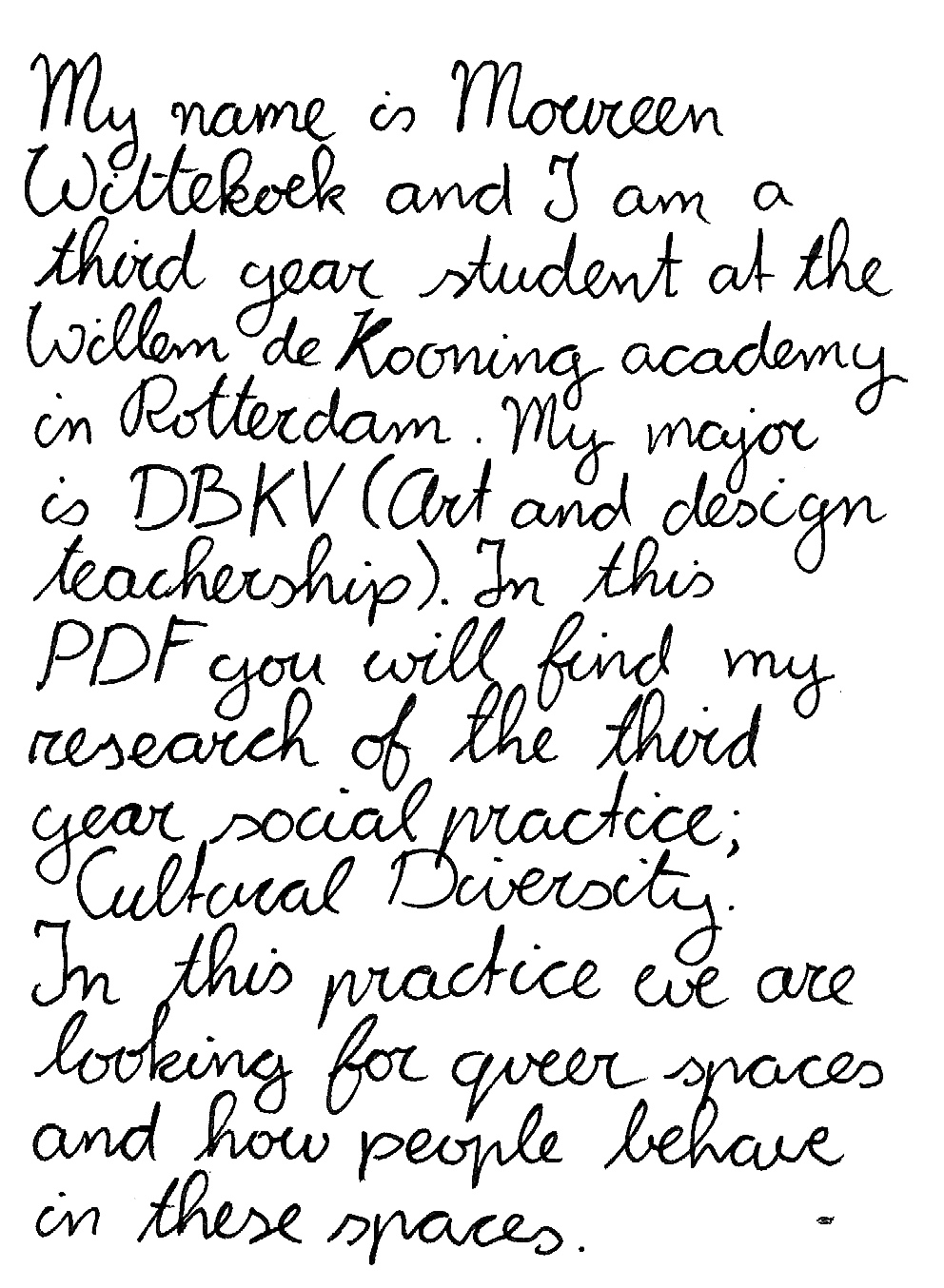
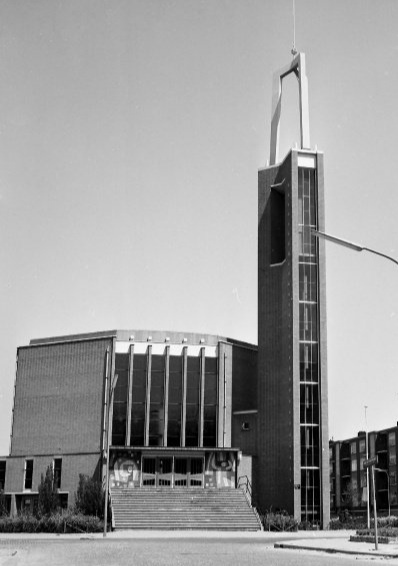
As a normal visitor on Sundays you would enter the church by the head entrance on the front of the building or the entrance at the back depending on which vehicle you traveled with (the bicycle storage is at the back of the building). At both entrances there is always someone to welcome you, mostly they greet you with a hand and give you a paper with the latest news from the church community, and an introduction from the service that day.
The next place most go to is the checkroom, left from the head entrance (20% of the people will bring their coat to their place). You may have a little chat with someone you meet on the way, or you choose a spot to sit. Most people have this certain area of bench they always sit in. For example: I mostly sit on one of the last three benches on the back of the space on the right of the sound engineer. On the fourth bench from the back sits is always the same very colorful dressed lady, etc.
It's quite normal that people climb over benches in our church building because if the bench is full and you need to go to the toilet during the service almost everyone has to move out of the benches because there is no space to go past everyone.
During service most people stay in their place. During Worship some might stand or dance. And every service has the moment of the open alter, where people can come to the front of the space and kneel down to pray.


After service we all stand to receive the blessing from God. Standing up during worship or receiving of the blessing is considered respectfully.
After the service 20% of the visitors will go home directly. From the people that stay for coffee 70% will gather around the coffee table, 20% will get coffee (or tea) and spread out away from the coffee table and a 10% will go back to a bench to sit down.
All visitors have to enter the building by the head entrance at the front. Except for the children that go to sunday school they have to enter the building by the back entrance.
At the entrance there will be someone to welcome you and check if your name is on the list (because you need to make a reservation to go to the sunday service).
Entering the building you have to disinfect your hands and wait in line to get a foam stick. These foam sticks are 1,5 meters long. Someone points out a spot for you to sit, and you have to put your foam stick on the right side of you, so someone else can sit there with distance. You have to bring your coat and bag with you to your spot.
During service you can still stand up if you want to for worship (but no singing) and receiving the blessing from God. You can go to the toilet during service if you need to (no need for climbing over
other events that may happened, but also to warn for a fire or attack.
Nowadays most old churches are monuments. Now churches are built in all different forms and sizes. Not always they use the stereotypical tower anymore in the church architecture. And because of the cost church communities reuse other buildings.
Things that always come back to the design of the inside of the church are a pulpit for the speaker on Sundays and a place for the music, like a band or an organ.
Also you may find large tables with attributes for the last supper, and you will find a Bible (mostly a large and old one). And of course space to host a lot of people.
The building is designed for religious purposes, and it's up to the owners of the building to exclude people or include. Everyone who is not religious may feel a bit awkward in a church building (or a Mosque, Temple or Synagogue), but will be welcomed by its community.
Though I have to be honest that there is an expectation, this building is designed as a house of God...with the expectation that the persons who visit this place are in search of God.
A Church building or often simply called a church is a building used of Christian religious activities: particularly for worship services. The building is mostly recognized by a large tower and/or the sign of a cross. In the Netherlands You will find most churches built in the center of villages/communities, because the church was/is in the history of a lot of area's the heart of the community. And a church often still is used as a community center.
If we go back in history, in the early years of Christianity the Christians just met wherever they could, and did not use a special place for there services like nowadays the church building is. This was because Christianity was illegal in the time of the Romans. In the year 313 Christianity was legal and in this period you can find the first history of the church buildings. The first church buildings were established in normal houses decorated with paintings from tales from the bible. Later they built basilica’s, this was in that time the most grand building you could build. The word basilica meant ‘a royal building’. The Roman catholic added side spaces to the basilica so the building became a cross in plan view.
Later in the middle ages they added large domes and towers to the architecture so people were compelled to look up to the heavens, to God.
Because of the role the church building had in the middle ages, as the heart of a city or community, they added bells in the towers not only for letting the citizens know the service was about to start or
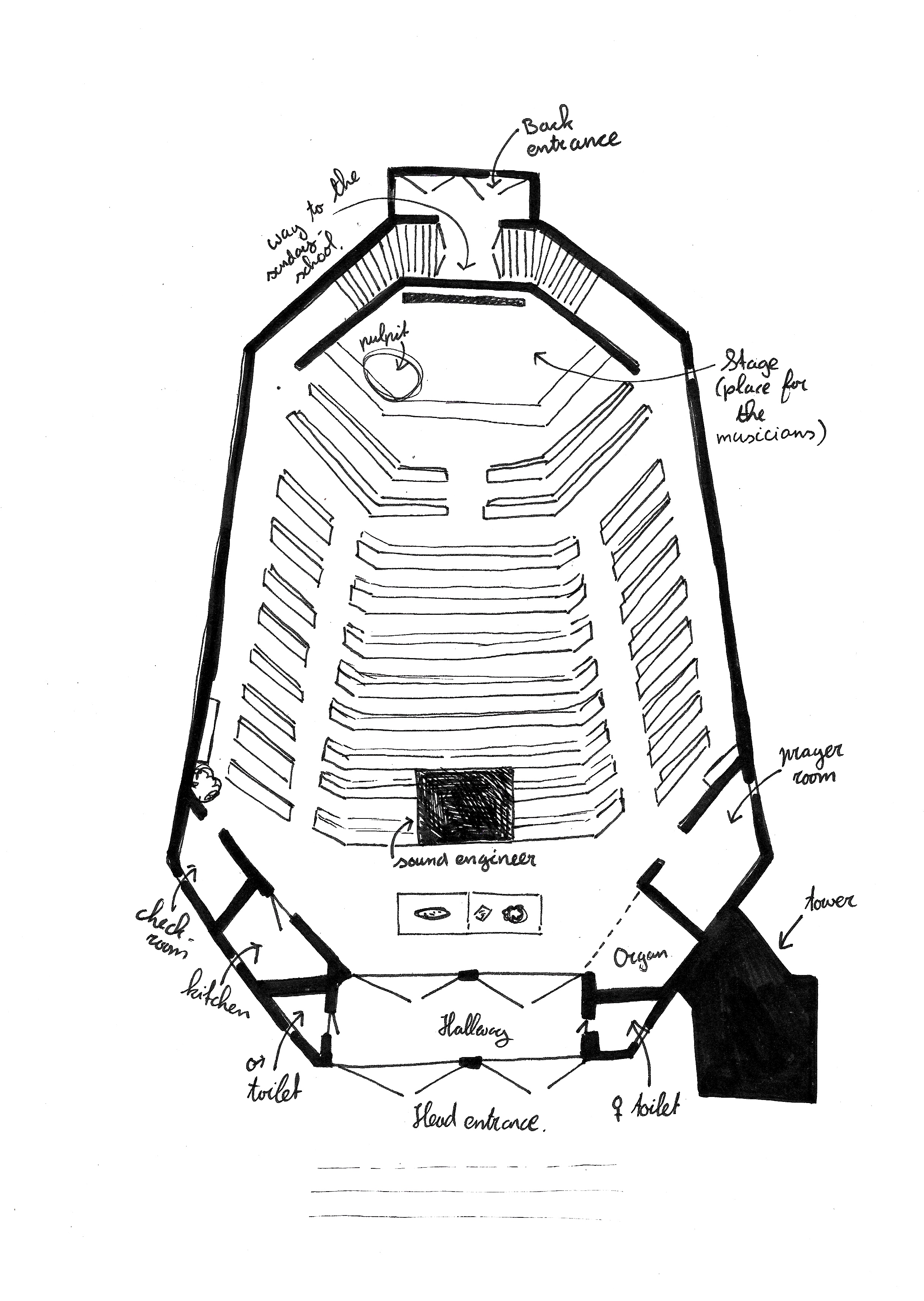

altar. After service everyone has to leave one by one and put the foam stick back on the table at the head entrance. Of Course there is a route everyone has to follow marked on the benches and the floor.

The building on the Talmaweg 121 in Dordrecht was long known as the Stephanus church and was a reformed church building. The architects of the building were Geenen and Oskam and the building has been in use since 1961. The history of the reformed church building is still present in the building nowadays: The organ and the typical wooden benches.
The Church of the Nazarene bought the building in 2002 and renofaded it in 2013.
One of the changes the building needed for its new owners was a stage for a band and places for sound equipment (the organ is since the renovation rarely been used).
The building is designed to host large groups (around 300 men).
The top layer of the building is the big hall where the services been held, there is also a small kitchen, a checkroom, toilets and a prayer room.
Going downstairs you will find toilets and a small kitchen as well, and also a large number of rooms that are used for the sunday schools.
Throughout the week The church of the Nazarene organizes courses in their building, afternoons for the surrounding community (not only the church community), and the food bank is located here.
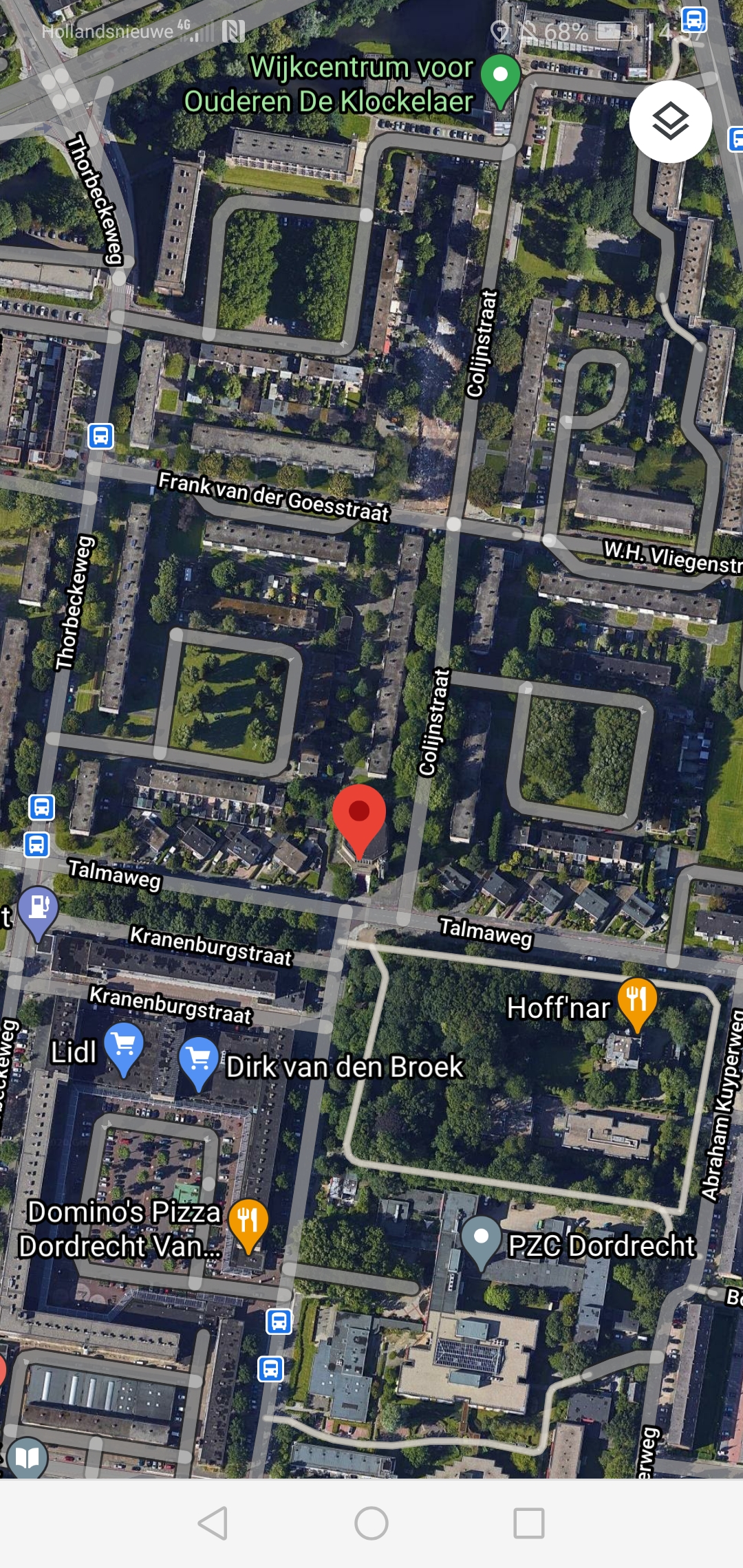
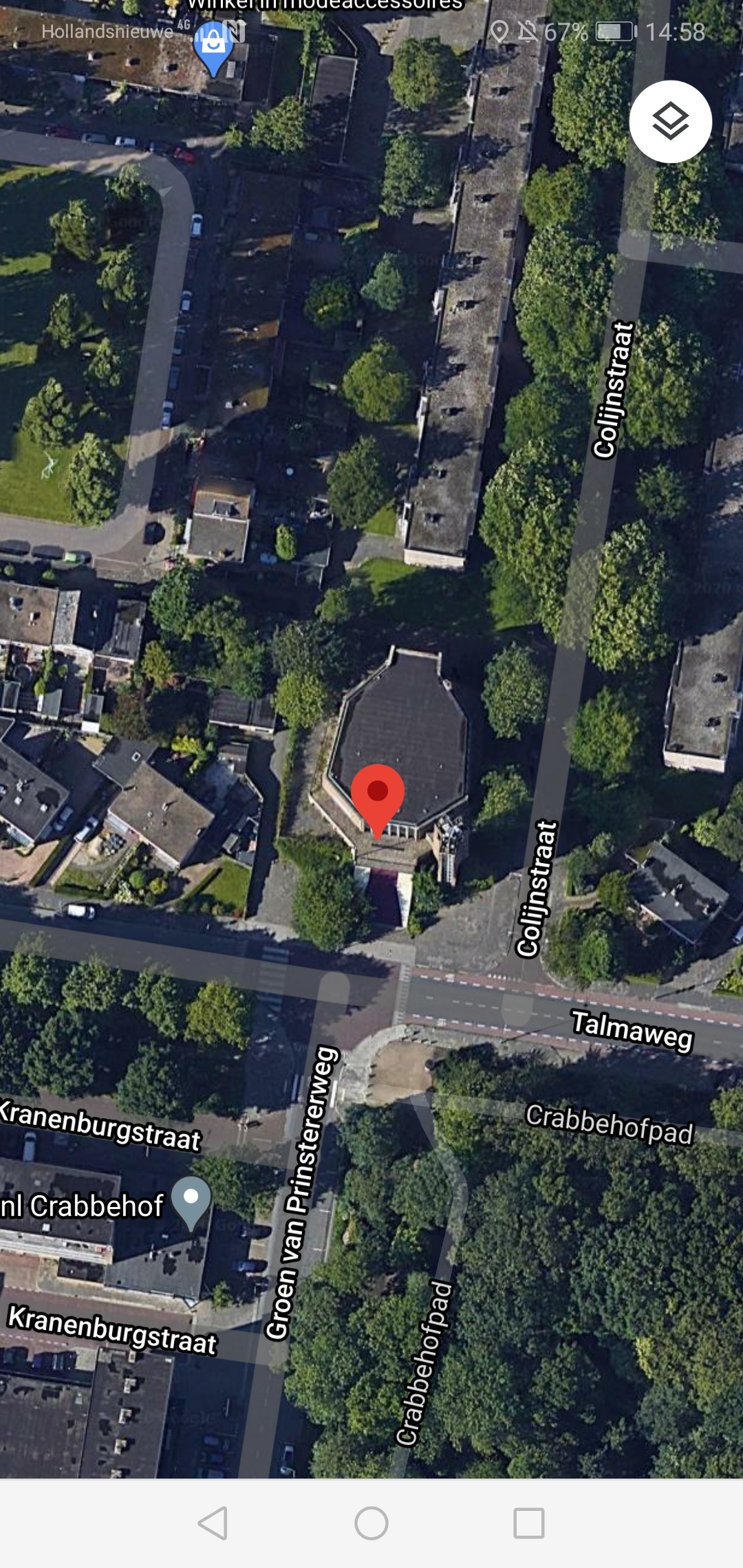
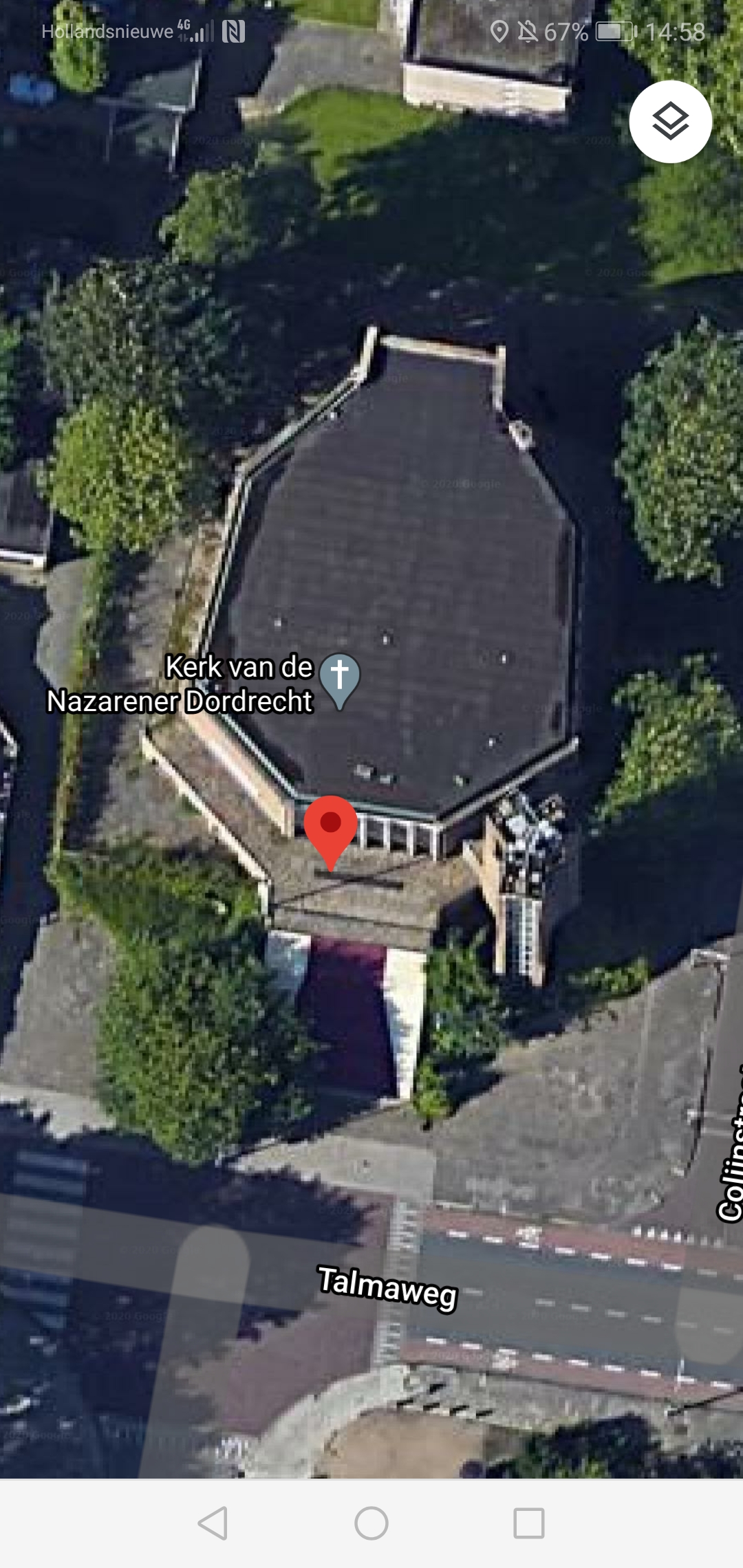
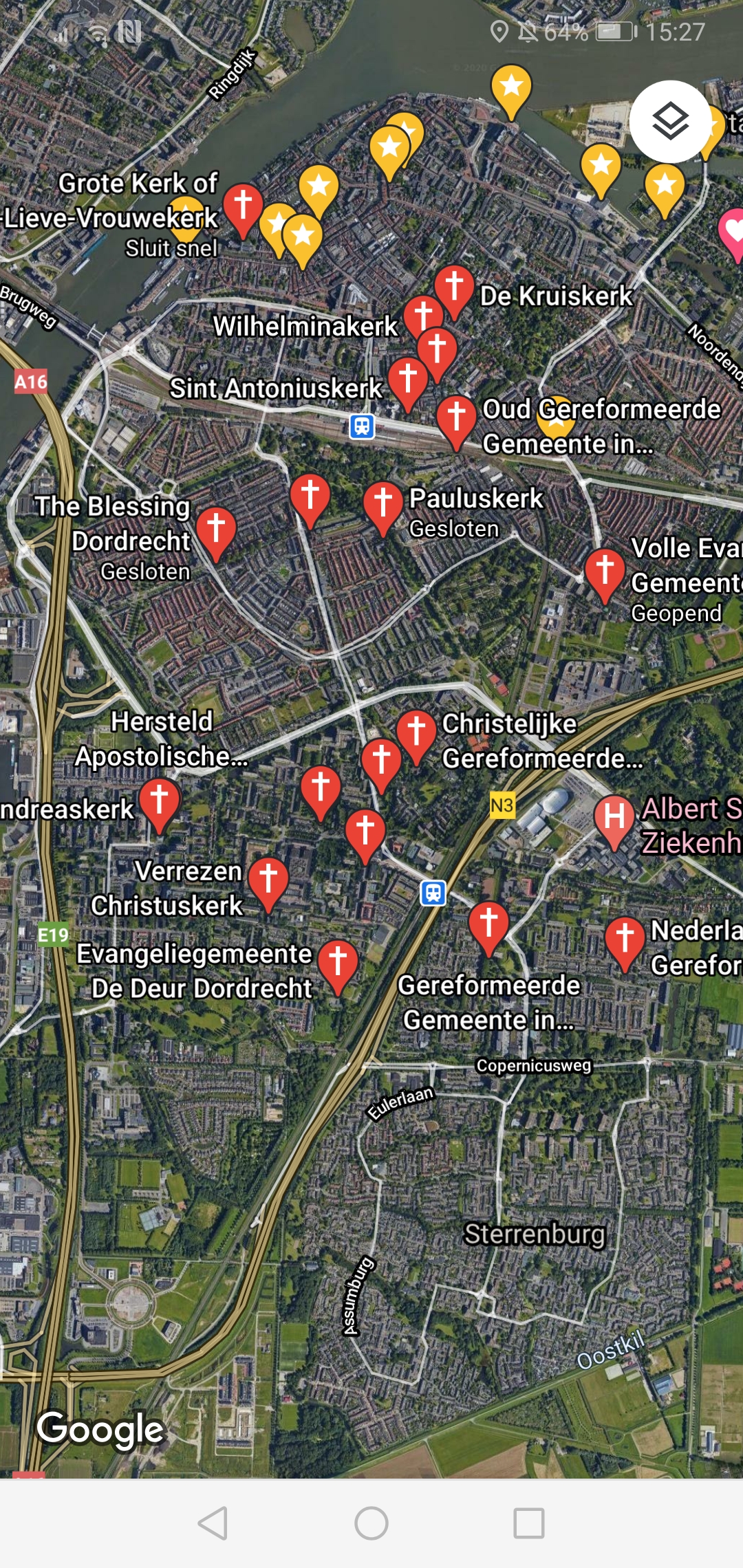

The building on the Talmaweg 121 in Dordrecht was long known as the Stephanus church and was a reformed church building. The architects of the building were Geenen and Oskam and the building has been in use since 1961. The history of the reformed church building is still present in the building nowadays: The organ and the typical wooden benches.
The Church of the Nazarene bought the building in 2002 and renofaded it in 2013.
One of the changes the building needed for its new owners was a stage for a band and places for sound equipment (the organ is since the renovation rarely been used).
The building is designed to host large groups (around 300 men).
The top layer of the building is the big hall where the services been held, there is also a small kitchen, a checkroom, toilets and a prayer room.
Going downstairs you will find toilets and a small kitchen as well, and also a large number of rooms that are used for the sunday schools.
Throughout the week The church of the Nazarene organizes courses in their building, afternoons for the surrounding community (not only the church community), and the food bank is located here.
The Church of the Nazarene
Talmaweg 121
3317 RD Dordrecht
www.kvdndordrecht.nl
Image above:
All churches in the town Dordrecht
Most of the rules of conduct used in the church building are out of respect for the place. I am thinking of being silent during prayer, standing up while worshiping and receiving the blessing.
The way of moving through space is now mostly very monotonous with all Covid regulations, but right where not at the moment? Most interesting in terms of movement, I found the poses that others adopt during prayer. One bent over so far that you're not sure if the person is awake. And the other with the hands open and facing up. And someone who does it perfectly by the book, straight posture with hands folded. But this movement has nothing to do with the space people are in, sadly.
What makes this building a house of God? It's not the tower on the side of the building, or the organ in the building itself. The building becomes a house of God through the people who often find themselves in it. The people who try to spread God's message by helping and loving others. The church community tries to assist the neighborhood, such as with game afternoons where everyone is welcome (and these afternoons are very important for people who suffer from loneliness). It is also a meeting point for the food bank in the area, and there are almost always social workers present with whom you can talk, not only about religion, but also about other problems. Being there for other people (in this case, the neighborhood) is what God asks of us. And that makes this building a so-called house of God.
Why people really want to be together in church during a worship service this period is a difficult question that I have not been able to fully answer.
God expects his community to continue to teach themselves from his book, the Bible. Modern technology makes that possible by broadcasting live streams, and in small groups members can still study from the Bible and share each other's findings.
Now I understand that many fellow Christians get a lot of energy from singing in church. Perhaps this is a reason? But is it not allowed to sing during the worship services? Even that, several churches have found a solution by walking and singing outside in small groups. But the majority of Christians honestly admit not to dare to do so.
According to the large group, should Christianity be behind closed doors? That is not in line with the conclusion of the previous paragraph. I admit that it feels good to be in a large group and to exercise your faith in it. But for these very difficult moments, God Himself gives various options for exercising the faith in small groups. I am very interested in how humanity cannot find its way in this.
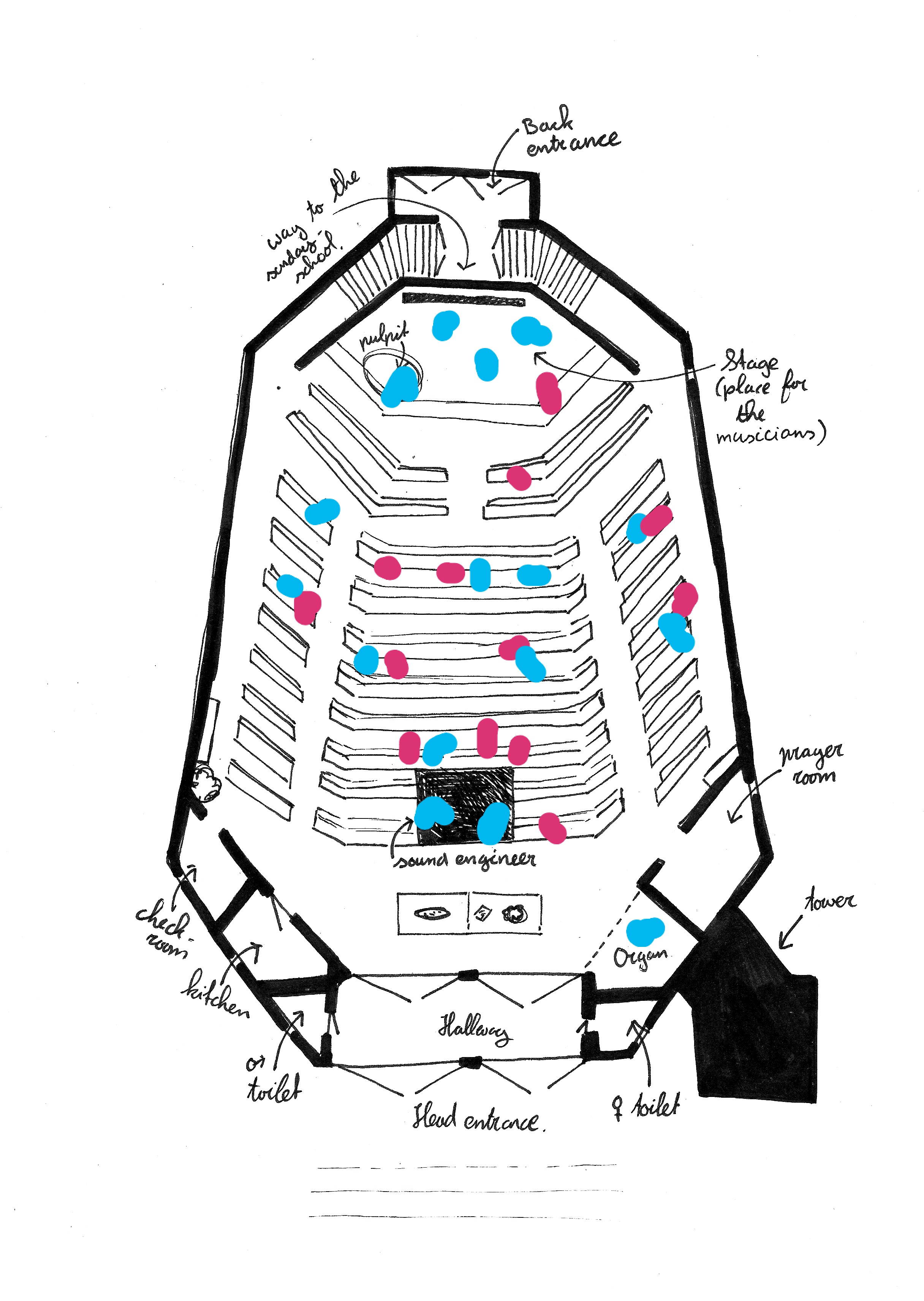









I made a map of two Sundays of the church and looked specific at how many women and men were present at the service. Now in the covid times there are only thirty people allowed in the building during service on Sundays. Things I noticed where: That mostly men play the guitar in the band and do the techniques around the live stream and sound effects. The teachers downstairs at the Sunday school for the kids are mostly women (we have only four men). And the speaker was both these Sundays a male, but I know we often have female speakers as well.
A question my teacher gave on the academy was: How does the church represent itself to the outside world? I looked at that, and The Church of the Nazarene does not have a whole lot of pictures on it’s website that shows more men or women, same for the text on the website. The vision and mission of The Church of the Nazarene is to be focused on the essentials of faith: That Jesus is the one and only way to God the Father; that we may strive to become more like Him, and that we get His love to spread around us all over the world. The issue of gender is a so-called side issue, something where The Church of the Nazarene doesn’t want to lay its focus on, because side issues are mostly the reasons for fractures in the church. And from my point of view: the issue is not an issue in The Church of the Nazarene. That’s why I want to focus on the place of women in church in general.



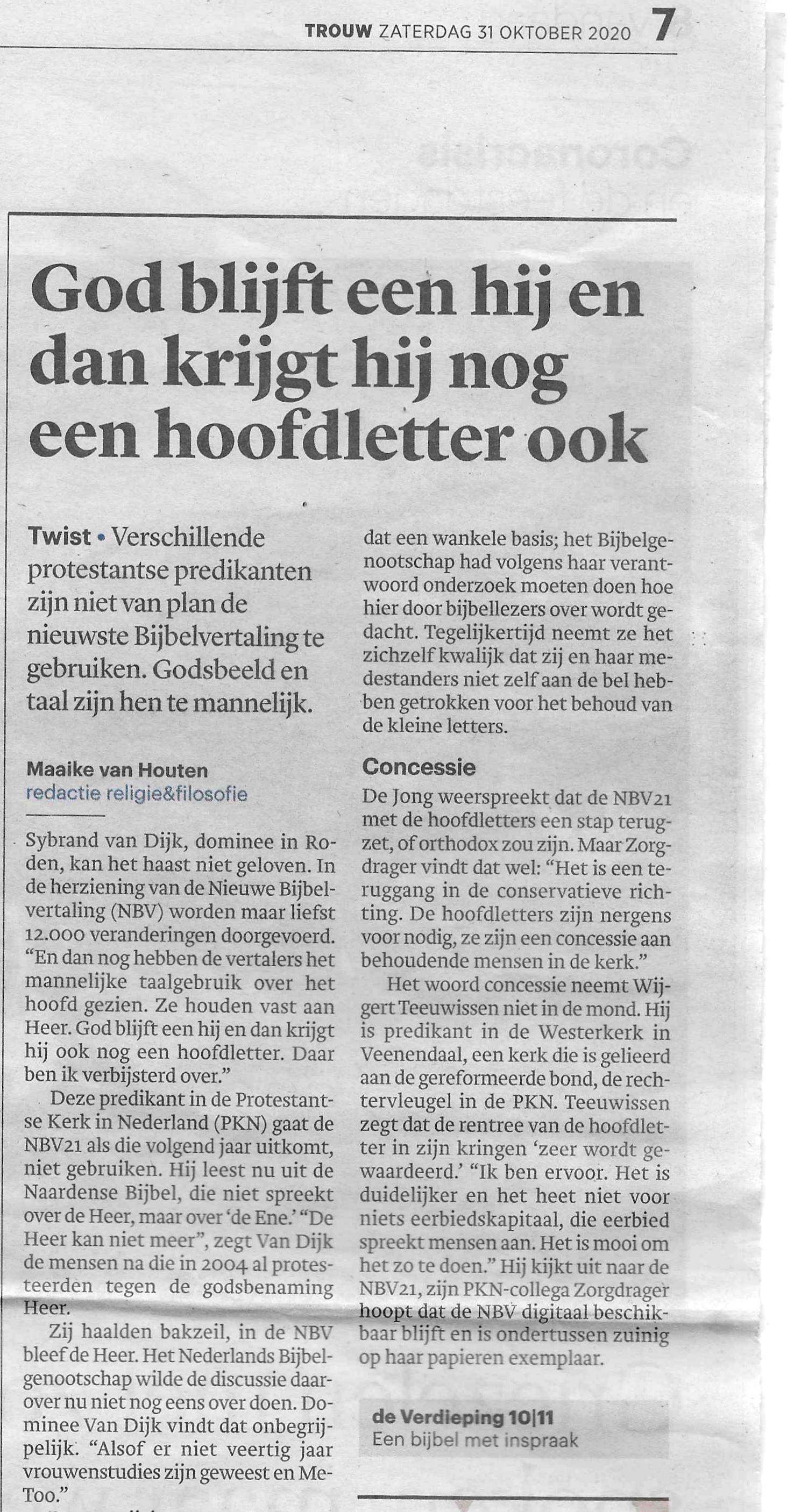
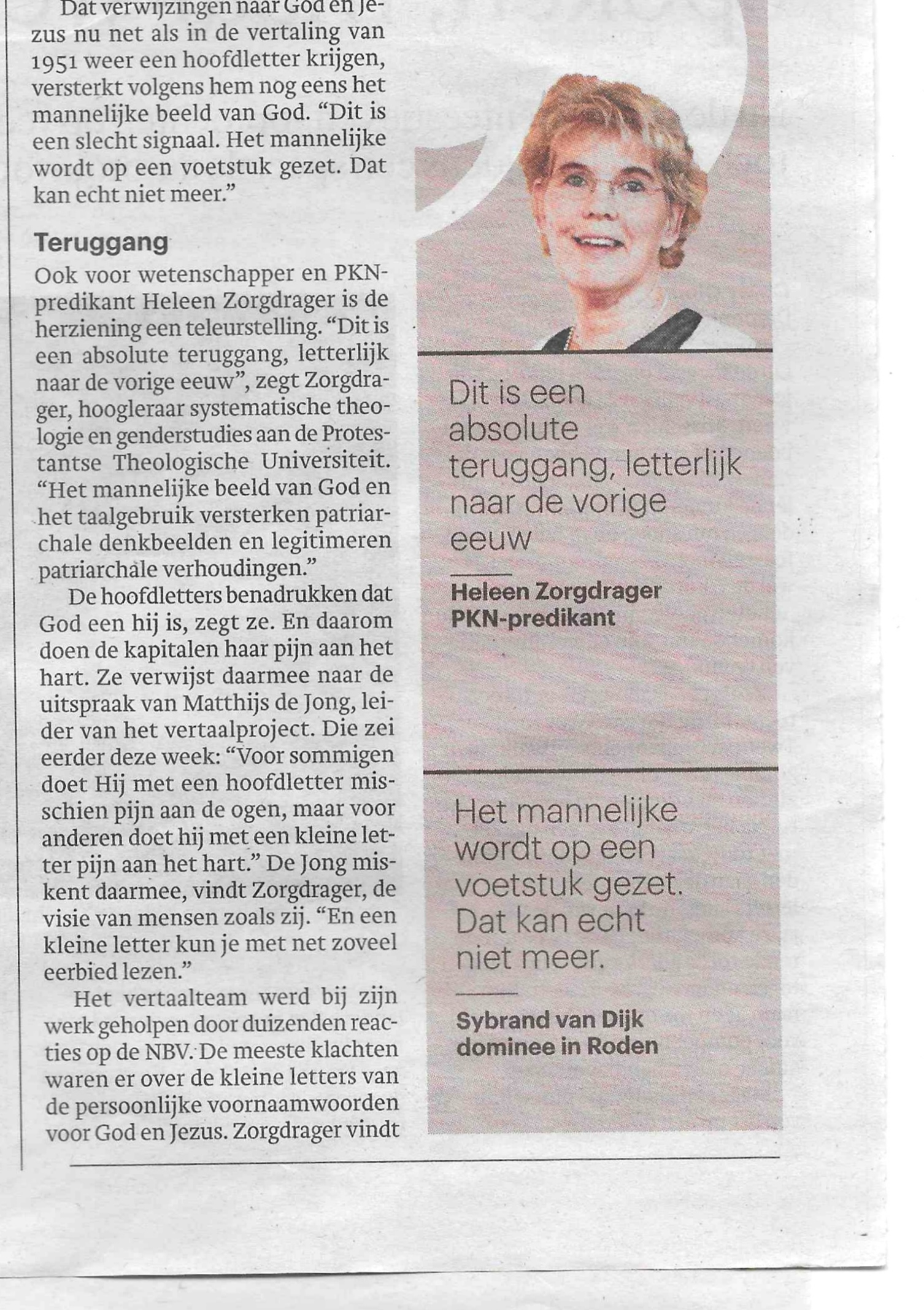
First thing you do as an christian when dealing with a question in faith is reading the Bible, like I did. And some may say the Bible is quite clear about the role of women in the church:
“34 Women should remain silent in the churches. They are not allowed to speak, but must be in submission, as the law says. 35 If they want to inquire about something, they should ask their own husbands at home; for it is disgraceful for a woman to speak in the church.” 1 Corinthians 14:34-35
“11 A woman should learn in quietness and full submission. 12 I do not permit a woman to teach or to assume authority over a man; she must be quiet.” 1 Timothy 2:11-12
First of all I like to address that one of the reasons of all the different churches is the interpretation of scripture. These two texts above can be taken very literally, and I know some do. From experience I can say that every text in the Bible can have twenty or more different interpretations, and none of us can say who’s right or wrong.
I have always learned to read Bible texts in three different ways: First, through the eyes of the writer, and the original reader. Who were initially the letters in the New Testament intended for? At what time was this written and what was the culture these people lived in?
Second, read the entire chapter and understand the context of a text. Many remain focused on just those two sentences of the text, while it is part of a chapter or letter with probably a theme.
And third, try to read the text through the eyes of Jesus. There is much written in the Bible about what he said and did, you can imagine how he would have done things. In my experience, the Bible often contradicts itself, but as soon as you apply this last step you usually get it right. Usually again. I have learned that by reading texts in these three ways I understand texts better, but I can also form a better opinion about them.
So let's start with 1 Corinthians 14: 34-36. First, The letter was written by the Apostle Paul to a young Christian church in the city of Corinth, sometime in the first century AD. Christianity was just born, and did not have a Bible like we do now. Also, most young Christian churches consisted of people of all different origins and other religions, everyone brought their own custom that often did not align with Christianity but still with their old religion. The apostles, including Paul, still had to teach the churches in this.
Women at that time, and then looking at the Jewish women for a moment, were equal to men, but had been given different tasks from God. Family was important in this culture, and the woman had full responsibility for it.
For this reason women had exemption from some time-bound commandments. These exemptions also diminished the roles of women in the Synagogue, as they were not required to be in the synagogue at times like men had to.
Education for women was also allowed in the Synagogue, provided they did not neglect the maintenance of their family there. According to traditional Judaism, women have a greater “bina” (meaning, intuition, understanding, intelligence) than men. The Rabbis deduce this from the fact that the woman was "built" by God, and the man formed. “Bina” also derives from the word “build” in Hebrew. Women are also said to be more spiritual than men according to some Jewish branches. Higher education might also mean that they became too spiritual, in their opinion.
In general (and not just for Jewish women) higher education for women was next to impossible. A female student was also not much loved, as she forsook her maternal / household duties.
Then we have to see what the entire letter is about: Almost the entire letter is about how to use each other's qualities in the church, and order in the church.
Nowhere in the Bible is it said that women are not allowed to learn, Jesus himself had many female students (Luke 10: 38-42). We also do not know with which issues this church came to Paul.
We only have his answer (this letter). It is very clear, however, that women were allowed to speak in front of the church, since in other tasks like prophesying, men and women are both addressed here in the same letter. It is quite possible that this letter addresses specific women in the relevant church who were causing unrest. Or perhaps from personal experience, it is often noisy in the church or in the lecture hall because people discuss certain questions during the lecture, which often distracts you from what the teacher is really telling. Then Paul would try to tell you here that during the service you should be quiet and you should focus on the teaching that is given, and you should discuss your questions at home for example with your husband, to go more to the teacher / pastor later? Why then he addresses women here? Perhaps because women were lagging behind in education in that time.Of course these are all ideas, but it makes much more sense with the rest of Paul's letter than that women should be silent at all times while they are encouraged to prophesy in another chapter of the letter.
Ultimately, we look at Jesus. As mentioned earlier, Jesus had both male and female followers. In Luke 10: 38-42, Jesus makes it clear that women need not be afraid of condemnation if they choose the teaching he gives them rather than taking full care of your family at the time, the job of the Jewish woman.
He tries to make the female student normal, and thus also trains women to spread his message to the world.
So to interpret the text in Corinth as that women are not allowed to speak for a church would, to my knowledge, not be in line with what Jesus did when he walked the earth.
Also in 1 Timothy 2: 11-12 Paul writes to a church (in Timothy) in which he reminds students not to go against their teachers but to submit to the teaching that is given, be a diligent student he says . Paul forbids a student's speech that interferes with learning, protecting the rights of others to hear and learn. So here too the expression “she must be silent” does not mean to shut up, not to be allowed to speak, but to prevent unrest during education.
Sometime in the past few weeks, I happened to come across an article in the newspaper that also ties in nicely with this topic (discussion feminism & Christianity). The revised translation of the new Bible translation will be released next year. This article criticizes the fact that this revision makes 12,000 changes, but does not change the dominant masculine language use.
Thus God is still considered a He, and written with a capital letter. Out of my own interest, I did a bit of research on this and found an article interviewing a translator of the revision. His conclusion is that it is the task of the translators to translate as clearly as possible into the contemporary Dutch language. Not to translate texts to the situation of the contemporary world. The explanation of texts and how to relate them to the contemporary world is the task of the pastor. I found this very well said. Then you might think what has this to do with the ‘he’?
Well that's it: The Old Testament was written in Hebrew. Hebrew has no neuter designation, only the masculine or feminine form. The masculine form in Hebrew is dominant, if a person or object has no gender it automatically becomes masculine.
It has nothing to do with the fact that the Jews used to believe that God was male or female, because the Jews did not believe that God had a gender. God created man in his image, she believed that the role of sex did not come into play until the creation of Eve. So that's why God is described in the Bible as a he. The capital letter has to do with reverence for Him. I myself have always learned from an early age to capitalize God and everything that refers to Him. I personally think that He deserves that respect, but that is a matter of opinion and choice I think.
https://www.trouw.nl/nieuws/met-de-politieke-correctheid-van-een-bijbeltekst-heeft-de-vertaler-niets-te-maken~b723a3cd/
Definition: Movement that aims to give women the same rights and opportunities as men.
Definition: Christianity is a (world) religion based on Jesus Christ. Christians believe that Jesus Christ is the savior, the messiah sent by God to save the world.
In the Catholic Church, several women can be found in the church building. At least; effigies. Interesting how women are not allowed to hold office in the Catholic Church, but they still get a lot of prestige. And can even be canonized.
https://www.catholic.org/saints/female.php
https://www.irishtimes.com/opinion/pope-s-view-on-women-in-the-church-has-brought-frustration-anger-and-tears-1.4190653
Modern feminists in Christianity:
Florence Nightingale
https://en.wikipedia.org/wiki/Florence_Nightingale
Helen Prejean
https://www.sisterhelen.org/
Linda Woodhead
https://www.lancaster.ac.uk/ppr/people/linda-woodhead
Sarah Bessey
https://www.sarahbessey.com/
Beth Moore
https://bethmoore.nl/
Rachel Held Evans
https://www.trouw.nl/nieuws/schrijfster-rachel-held-evans-1981-2019-hield-haar-christelijke-geloofsgenoten-een-spiegel-voor~b30b8330/
Vicky Beeching
https://vickybeeching.com/about/

I got stuck in my research. Okay, I had my own opinion and I substantiated it reasonably well. After a feedback meeting with one of my teachers, we wondered how the voice of women can be heard through the church today. Difficult. I did come up with ideas, but had the constant feeling that I could hurt people with them, because as mentioned before, there are a lot of different views on this issue. I would like to make people aware of it, but not force them to assume, as they often do with their ideas about the position of women.
I don't want to be like them. I also find it important that God, together with women, is central to my work. Or actually not together, but through the women. Because I personally think that not so much a female or male voice should be heard in the church. But God's voice. Back again to the Bible, because there are also a number of feminists, or women who did justice to their people. Some women with interesting stories and some that I see as an example. I hoped to get more inspiration from this for a visual thesis. Here are some of the women (out of many) mentioned in the Bible:
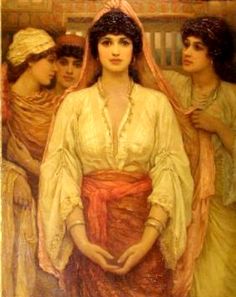
Esther was a Jewish girl who became the wife of the Persian King Ahasuerus in the fifth century BC. She is the king's darling who does not know that Esther is Jewish, the people in exile in his land at the time. Haman, a highly regarded commander of the king, plots to exterminate the Jewish people.
When Esther finds out about this, she confronts her husband the king with this, at the risk of her own life. At this time it was a custom that if you approached the king without permission, and as a woman confronted a man you would be put to death. That was what happened to Esther's predecessor. In the end she did save her people, and with that the coming of the savior, Jesus.
The remarkable thing about the book of Esther in the Bible is that the name of God is never mentioned.
Deborah is the only female prophetess and judge we meet in the Bible. She lived in the time when Israel had no king. Deborah is respected by everyone, including the men. And that is special at a time when the men are in full control. Deborah does what she has to do: She takes on the task that God gives her. When an attack from the Canaanites threatens, Deborah contacts the army command and passes on God's directions. She encourages army leaders to trust in God. Where Commander Barak hesitates, Deborah is determined. She takes over the lead, leads Barak, and in this way manages to get ten thousand soldiers after her. Thanks to Debora, they regain confidence and go into battle.
The Canaanites are crushed to death. Only army chief Sisera manages to escape. When Barak goes after him, Judge Deborah predicts that not he will win, but a woman. Sisera takes refuge in a tent with a woman named Jael, who tells him to be an ally. When Sisera is asleep he is killed by Jael, she does this by hitting a tent pin through his head.
Eve is the very first woman on earth, the mother of all life after her. Said is formed by God from Adam, the first man on earth. They are instructed by God to take care of the earth together. When both eat of the tree of the knowledge of good and evil, which God has emphatically forbidden, they are banished from paradise.
Eve is often used as the reason why women are placed under men in some churches. Because she’s the first who eat from the forbidden fruit in paradise.
https://www.trouw.nl/nieuws/was-eerste-mens-maar-verstandiger-geweest~bd84d075/#:~:text=Eva%20gaf%20de%20appe
l%20aan,van%20paradijselijk%20leven%20een%20feit.
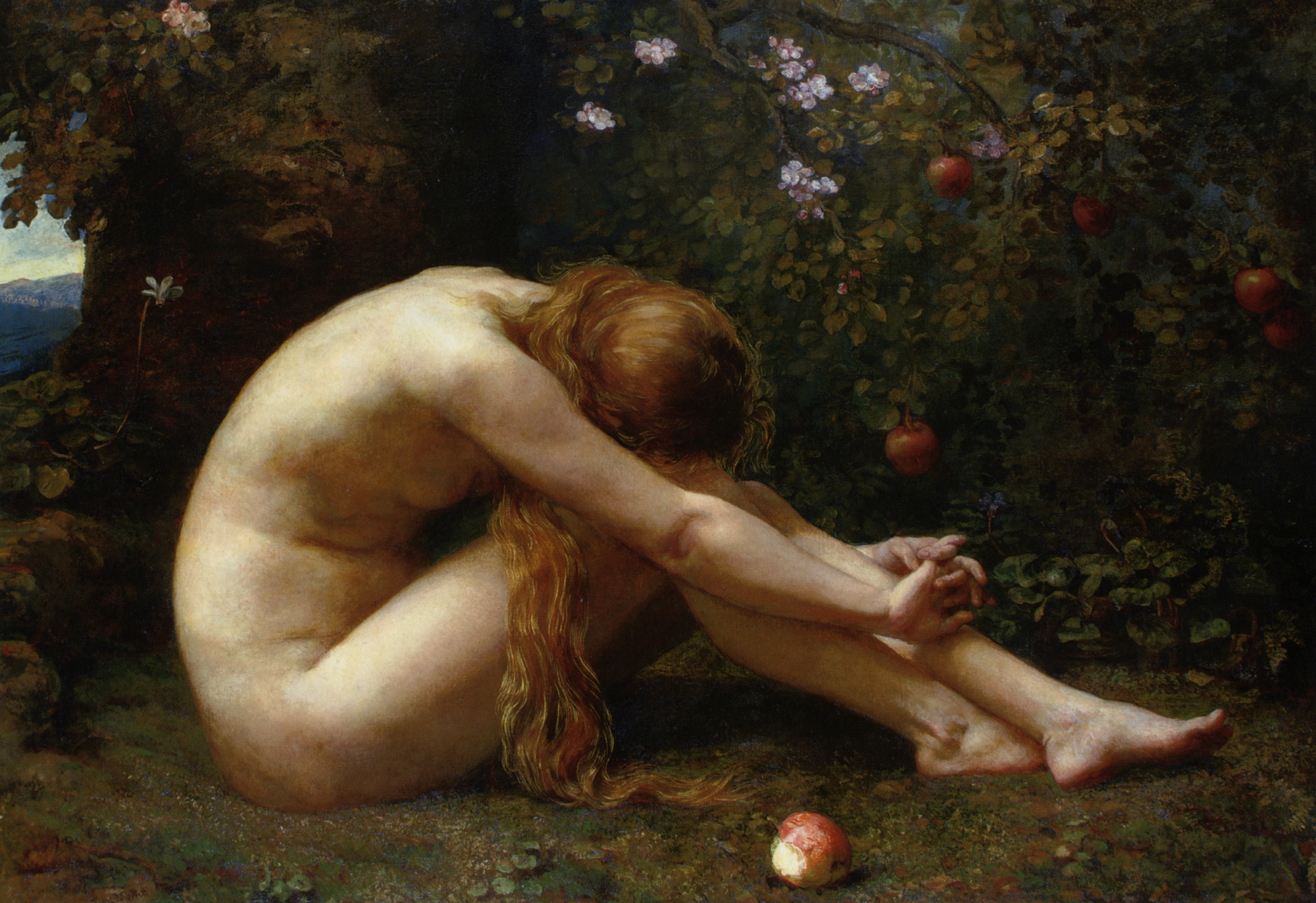
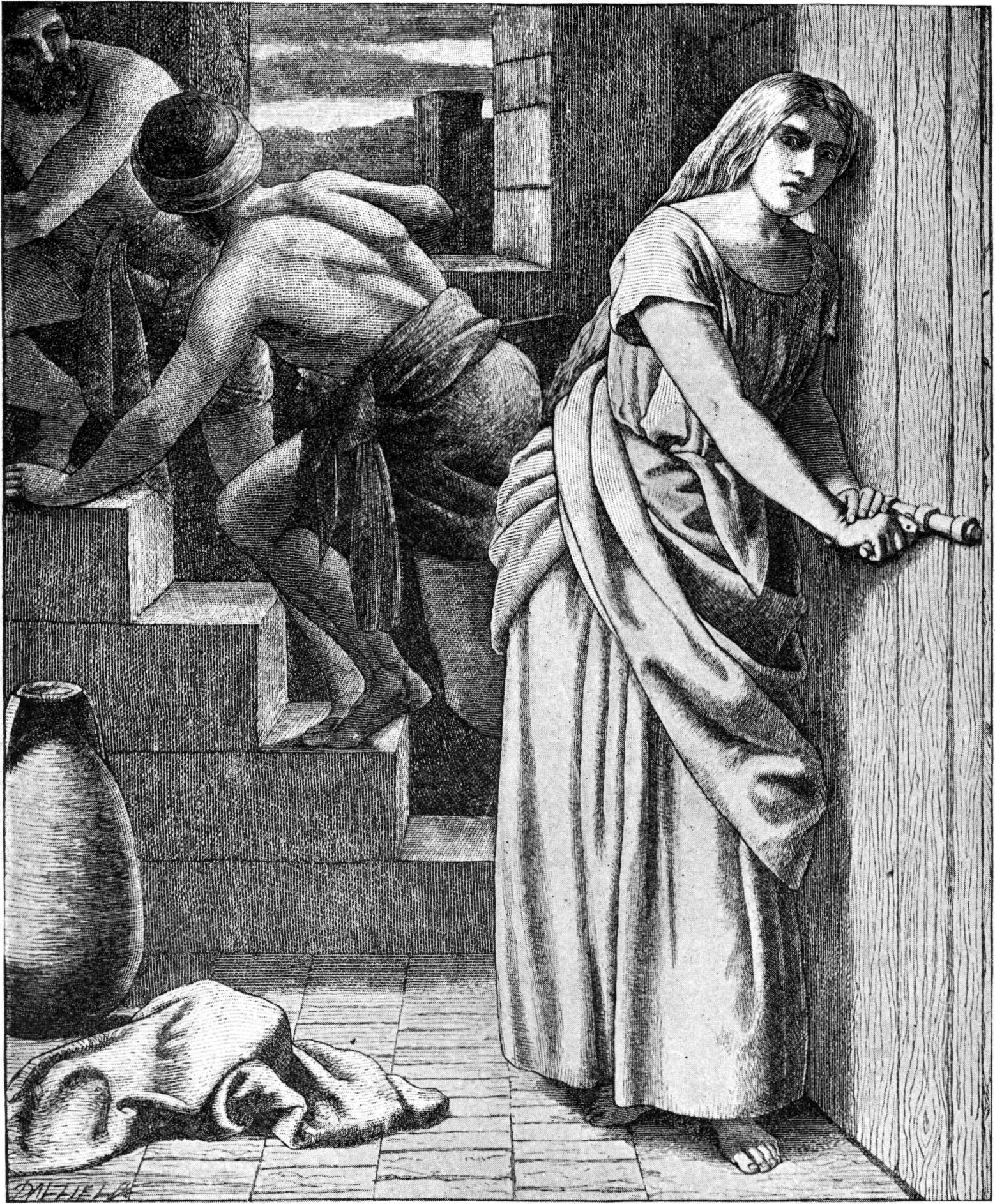
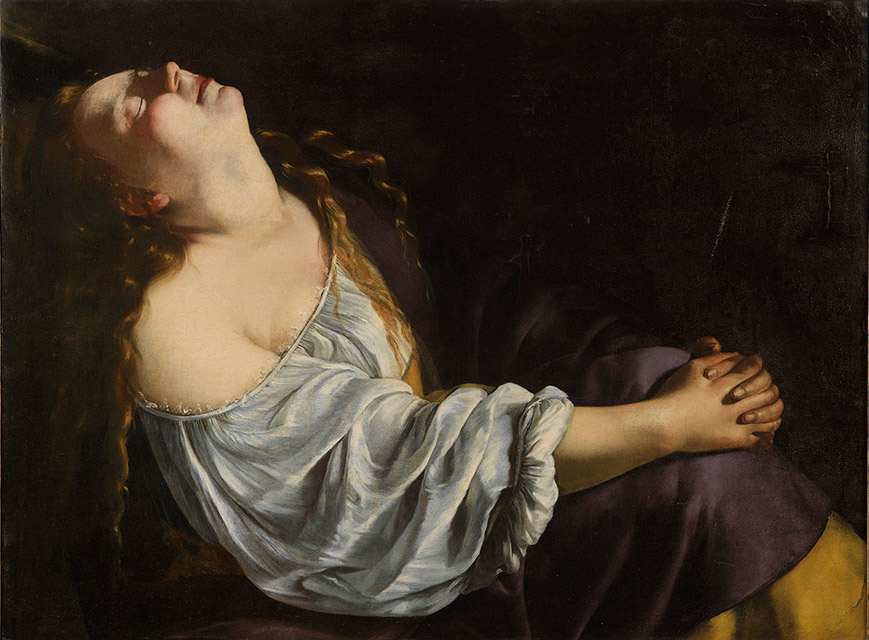
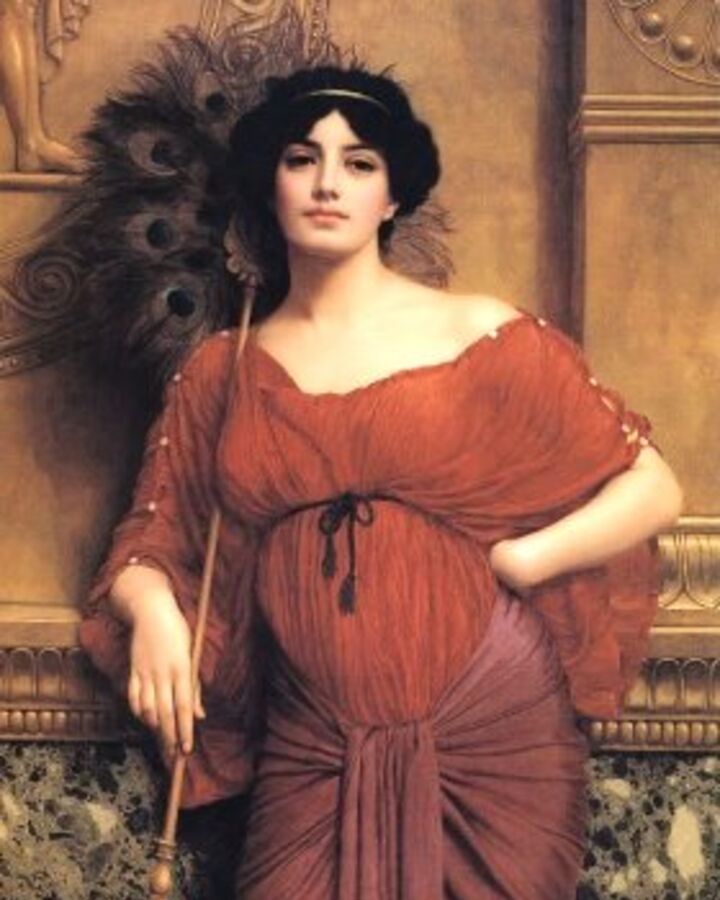
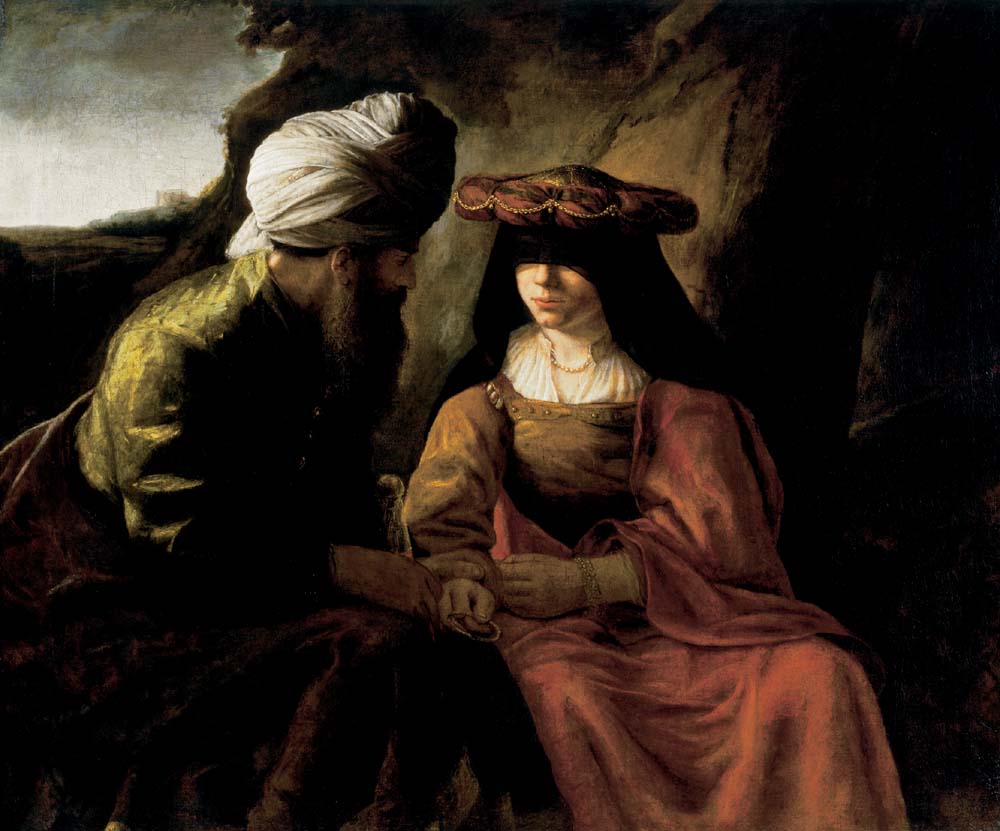
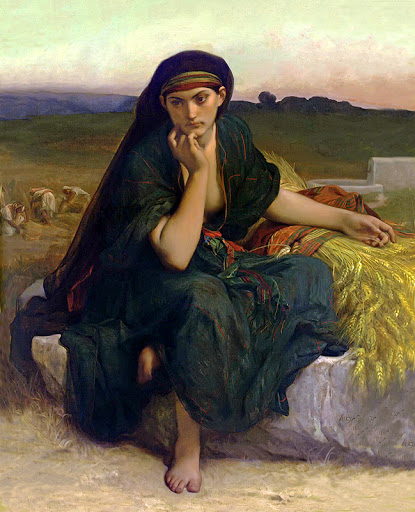
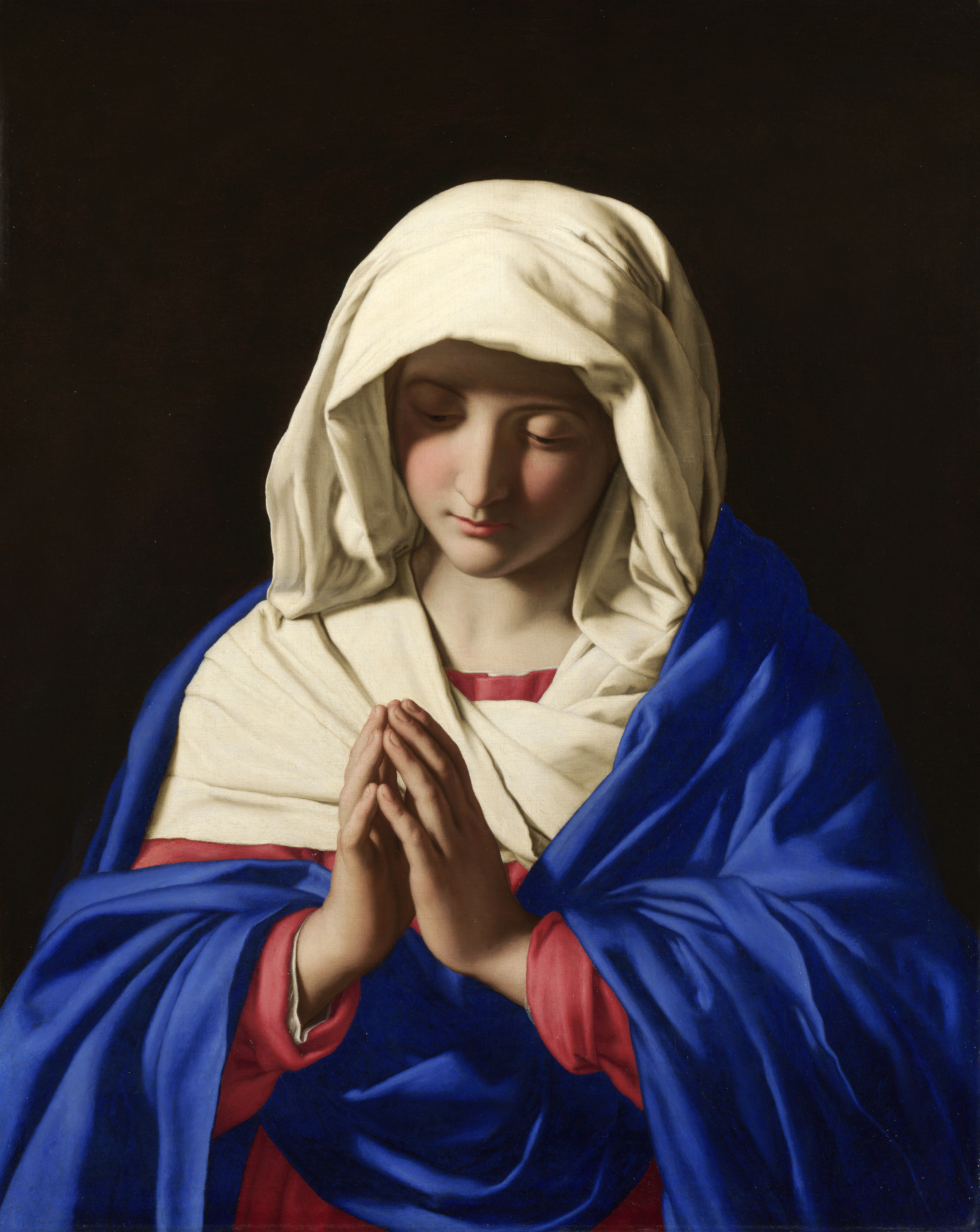
Mary Magdalene (left painting) was a prostitute, it is also mentioned in the Bible that she was possessed by evil spirits and after Jesus freed her from them she followed him. She was seen as one of his many students, and was also present at his crucifixion and resurrection. Mary Magdalene was the first eyewitnesses at Jesus' resurrection, and her mention of this in the Bible is considered special since testimonies from women were not recorded at the time. In court at the time, a woman's testimony was worthless.
When the people of Israel want to conquer Canaan, they come across the city of Jericho. Two spies are sent ahead to take a look at the city. When the city guard realizes that there are two spies in the city, the spies are hunted. They go into hiding in the house of a woman named Rahab. In some Bible translations she is described as a prostitute, and in others as an innkeeper, hiding the spies under the flax mats on the roof until the city guard has passed her home built in the wall of Jericho. When it's safe and the spies leave, she asks if she and her family can be spared when the Israelites attack the city. She is instructed to hang a red cord from the window, and then she and her family will be spared. And so it happens, Rahab thereafter continues to live with her family with Israel, and later appears in the Bible in the genealogy of Jesus.
Elimelech and Naomi flee with their two sons from the land of Judah to Moab in wartime. There the sons of Naomi married two Moabite women. When there is peace again in Judah, Naomi decides to go back to Judah, meanwhile her sons and husband have died, she only has her two daughters-in-law. Both decide to go with her to Judah, on the way Naomi again gives them the choice to return to their homeland of Moab. One of the two daughters-in-law chooses to do so. The other, Ruth, goes with Naomi to Judah, where she takes care of her mother-in-law. She is noticed by Boaz, a distant relative of Naomi, who wants to act as a redeemer for the two women, which would mean taking both under his wing. He and Ruth get married and have a child named Obed, King David's ancestor.
Judah had three sons, Er, Onan, and Shelah. Tamar marries Er, the oldest son. Er was evil in God's eyes and was put to death. Widow Tamar is left childless. Then she was given to Onan, but God put him to death for refusing to enter brother-in-law marriage. Tamar remained childless.
Because Judah constantly delayed giving her to his third son, Tamar dressed up as a prostitute to hide her identity so that Judah himself might have intercourse with her. She took his signet ring, his cord, and his staff as collateral. When Judah heard that Tamar was pregnant, he first commanded her to be burned, after being stoned. But when he learned that through her crafty course of obtaining an heir he himself was the father, he exclaimed: "She is more righteous than I am."
When King David sees Bathsheba bathing from his roof terrace, he wants her. He sends his servents to her to get her, en he sleeps with her. Bathsheba is actually the wife of one of his soldiers Uriah, and she becomes pregnant from David. When it fails to let Uria think the baby is his King David devises a ruse to kill Uriah. After the death of Uriah, David takes Bathsheba as his wife, but their first child dies as punishment for what David and Bathsheba did, because it was bad in the eyes of God. Their second child is Solomon, the heir to King David.
According to genealogies in the Gospels, both Mary and Joseph are descended from David. This fulfilled the condition that, according to the prophets of the Old Testament, the messiah, whom God would send, would come out of the House of David. The New Testament records that Mary was not yet living with Joseph but was engaged when she became pregnant and that they had not yet had sexual intercourse. So Mary was still a virgin. According to Christian theology, Jesus was conceived into Mary's womb by the power of the Holy Spirit.
Mary was visited by an angel of God who told her the news that she would be the mother of the savior God had promised to send, and that she should name the baby Jesus when He was born. Mary and Joseph lived in Nazareth, and because a census took place at that time everyone had to return to their ancestry town, this was for Joseph Bethlehem. Joseph left with his heavily pregnant wife for Bethlehem, where the baby was born.
In the Catholic church they do hold on to the belief that Mary also after the birth of Jesus stayed a virgin. Feminist theology sees the doctrine that Mary was always a virgin, along with the doctrine that evil proceeded from Eve, the backward position of Mary Magdalene, and the emphasis placed on procreation in Catholic sexual morality, as de-eroticizing the woman who cannot be herself. It is true that Mary is highly regarded, but partly at the expense of her identity as a woman. By viewing her eternal virginity as a higher destiny than motherhood, the Fathers of the Church could maintain their abhorrence of eroticism and their distrustful disdain for women and still honor Mary as the mother of God, say some theologians.
Before starting this research I would never have described myself as a feminist. I have rarely interfered in such discussions. Feminism is a word that makes me tired in advance. I didn't think I had much to do with it in my current life. Yes I was wrong. Although it may not be an issue in my own church, it appears to be a thing in other churches. Now I have spoken to quite a few women who sit in the relevant churches and make no problem at all. But I have also spoken to a few who can speak fantastic, and can extract and recite the beautiful essence from the Bible who are therefore not allowed to use it in their community. Box under the guise of: This says Paul. If the Lord has made you with a good dose of leadership qualities and you would like to do something good with it, but you are not sure how? I know the scriptures that have something to say on the subject. But I also know that you have to read them in context, and that many, for safety's sake, let the texts be supported by the Calvinist tradition (look back to my Biblical research).
We can't ignore it, it's in the Bible! God certainly uses women in special ways, just like men. Women are even mentioned in the genealogy of our Savior Jesus Christ! Which is quite special for the Bible.
For my visual thesis, I would like to take a closer look at these women and base my work on these five women. All five women have a special story and have used their gifts for the service of God, but also themselves as a woman.
The ultimate goal would be to be able to exhibit these five works somewhere in order to make it possible to discuss this very issue through the works.


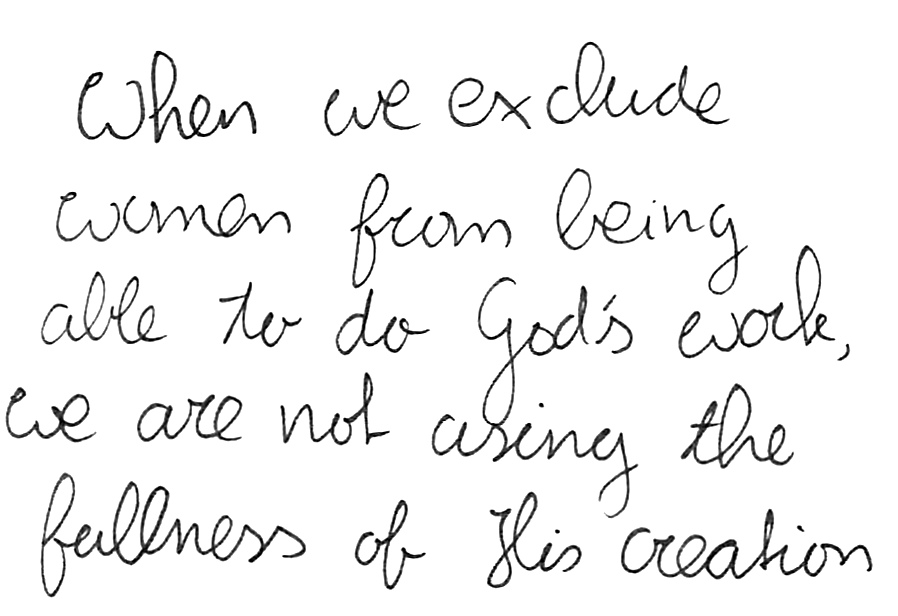
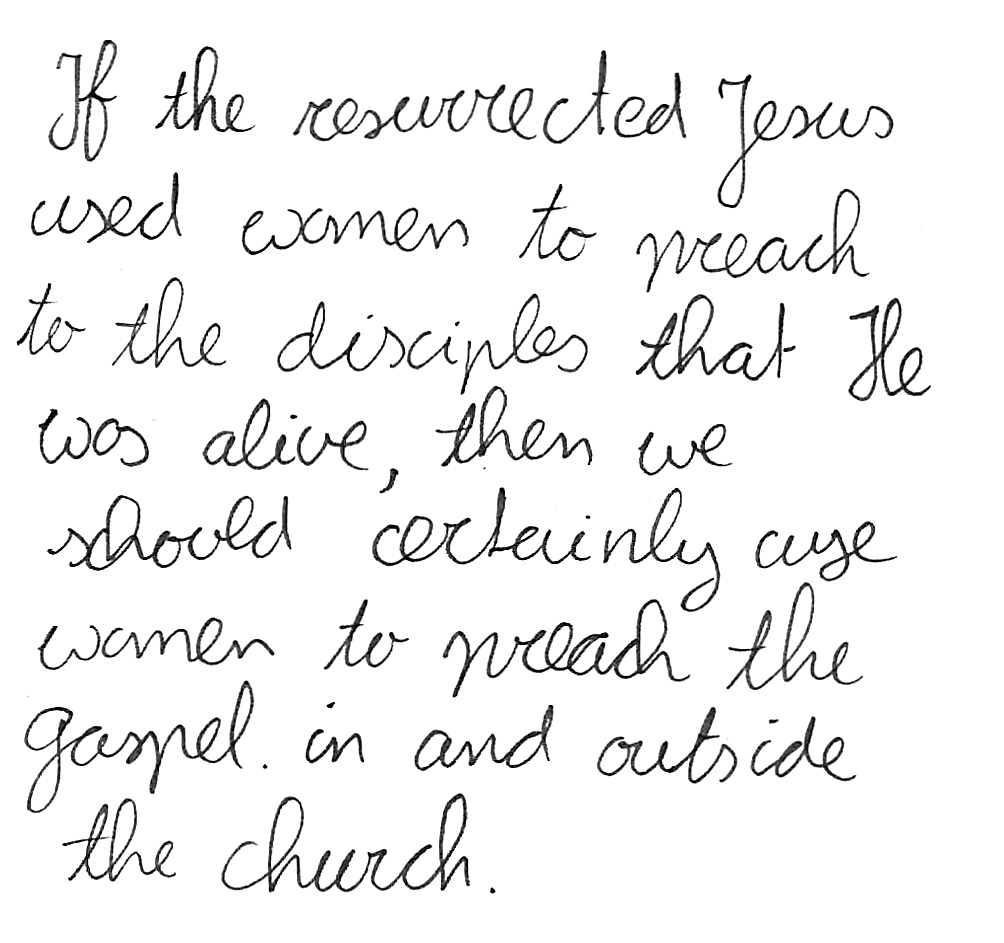


I can describe my intervention for this practice as a summary of my research, which consisted of reading a lot from the scriptures, but mainly talking to people about the subject. The interview was central. That is why I decided to record a number of interviews with fixed questions and make a compilation of them. In this way, others who hear the interviews can draw their own conclusions.
I kept the questions for the interview open so that participants could answer as broadly as possible. Selection of participants was as follows: I wanted the participant to have something to do with the Christian faith. I interviewed men and women because I think this issue concerns both. And I looked for participants who came from different church communities. Everyone in my work has a different background within the Christian faith.
The question's I used:
1. What does your faith mean to you?
2. What is your place in faith? Do you have a task in church, or given from God?
3. How do you see the position of the woman in this?
4. Are women and men allowed to perform the same tasks in the Church? Why?
5. Is this an important matter of faith for you? And in general?
6. Can we be a general church without agreeing on the side issues?
7. How do you see the division of roles of men and women in the church in 20 years?
Feedback: Amandine Gay, Ouvrir La Voix.
How did Amandine use the voice of these women? How to create awareness?
Her film Ouvrir la Voix is a documentary giving voice to Black women in France that aims to give an other approach of feminist movements.
A woman's voice,
is a compilation of interviews about what faith means for the interviewed person, and also how that person feels about the place of women in the church.
The interviews are held with Christians from different churches, and are based on their own opinion or faith.
The images in the video are from various kind of seeds, and plant cuttings. These symbolize the young movement in the church that allows women to speak. The thought is sown.
It also revers to a text in the Bible where Jesus tells us the kingdom of heaven is like a small mustard seed. When we show the outside world our love, and that we utilize each other's qualities.... were sowing the kingdom of heaven.
(Left: Trailer of A woman's voice)
31 He told them another parable: “The kingdom of heaven is like a mustard seed, which a man took and planted in his field. 32 Though it is the smallest of all seeds, yet when it grows, it is the largest of garden plants and becomes a tree, so that the birds come and perch in its branches.”
Matthew 13: 31-32